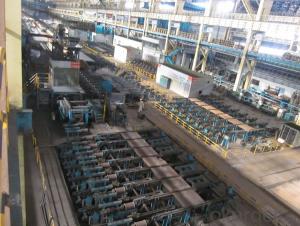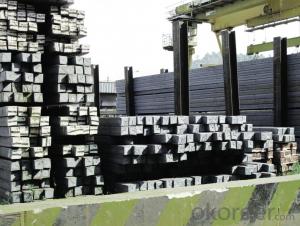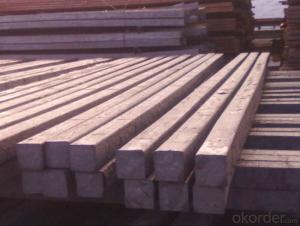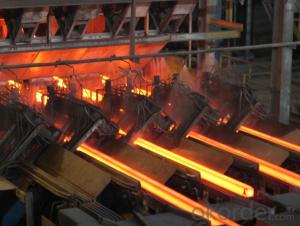Q235/3SP 70MM Blast Furnace Hot Rolled Steel Billet
- Loading Port:
- Tianjin
- Payment Terms:
- TT OR LC
- Min Order Qty:
- 2000 m.t.
- Supply Capability:
- 30000 m.t./month
OKorder Service Pledge
OKorder Financial Service
You Might Also Like
Description of Q235/3SP 70MM Blast Furnace Hot Rolled Steel Billet
Our hot dip galvanised steels consist of a steel substrate with a metallic zinc coating applied by means of a continuous hot dip galvanising process. Metallic zinc coatings are available in steel grades ranging from steel for bending and deep drawing applications, to structural steels and high yield strength steels.
A glossy surface finish obtained under specific skin-pass conditions (either non-skin-passed or skin- passed with smooth cylinders to obtain low roughness) can be provided if required at time of enquiry.
Advantage of Q235/3SP 70MM Blast Furnace Hot Rolled Steel Billet
Uncoated CR steel sheet With the features of in line with the international highest standards in demension and shape, excellent surface finish and properties, the products are mainly used in home appliance and automobile industries.
Galvanized steel sheet(include HDG and EG)
With the features of good corrosion resistance, the products are mainly used in automobile, home appliance, electronics, building and machinery manufacture industries, etc.
Precoated steel sheet With the features of enviromental protection and good processablility, long lasting surface durability, rich in colors, the products are maily used in building, home appliance and furniture industries, etc.
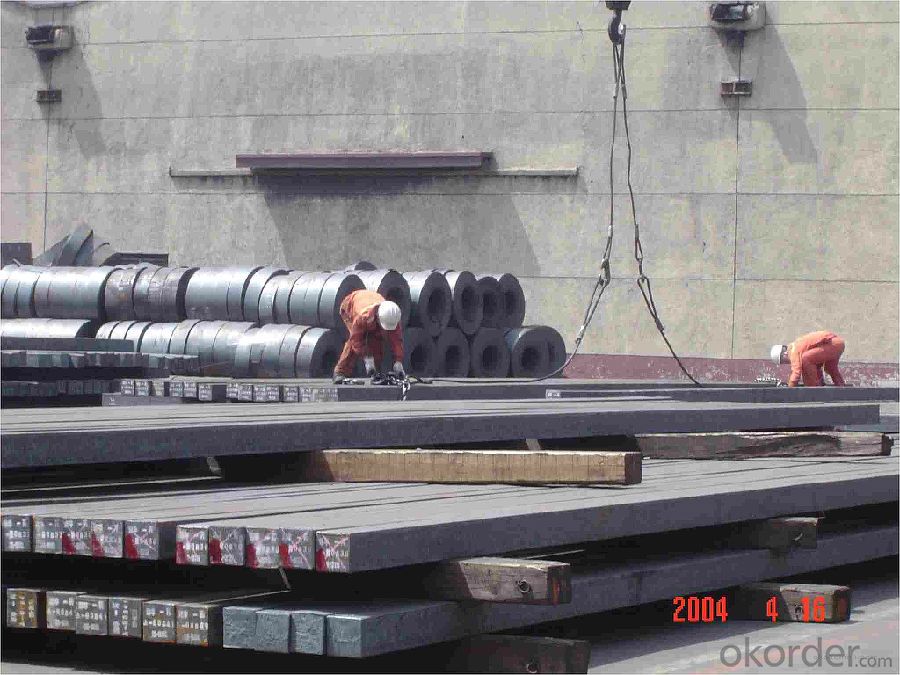
Applications of Q235/3SP 70MM Blast Furnace Hot Rolled Steel Billet
Our hot dip galvanised steels can be used in a very wide range of applications for industrial markets, both indoors and outdoors. Some of the most common applications are:
Building: wide sections for roofing and cladding, doors, door frames, metallic ceilings, partitions, structural members etc
Domestic appliances: all appliances for this sector (both white and brown goods) are manufactured with hot dip galvanised steels
Miscellaneous: electrical cabinets, aeraulic components, air conditioners, road signs etc
Zinc hot dip galvanised steel is suitable for contact with foodstuffs under certain conditions, as specified in European directive 89/109/EEC and French standard NF A 36-712-1. Please contact us for further information on this subject.
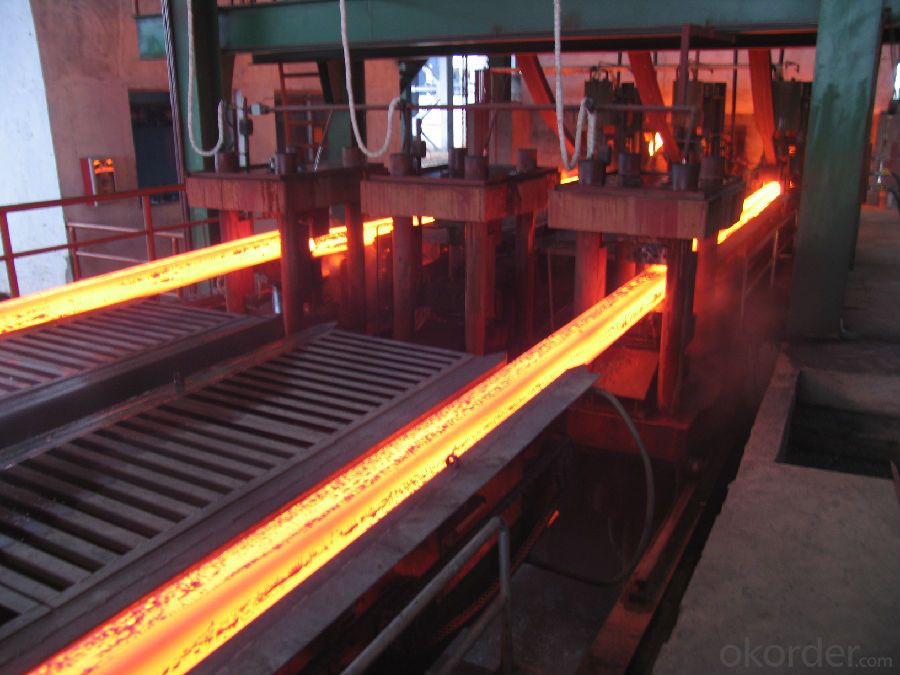
Specifications of Q235/3SP 70MM Blast Furnace Hot Rolled Steel Billet
Quality | Q/BQB 440-2003 | JIS G3312-1994 JIS G3321 | EN 10326-2004 | ASTM A653-02a |
EN 10327-2004 | (BASE PLATE) | |||
(BASE PLATE) | ||||
Commercial Steel | DC51D | SGCC SGLCC | DX51D+Z DX51D+AZ | CS Type A/B/C |
Forming Steel | St01,St02,St03 | SGCD1 SGLCD1 | FS Type A, Type B | |
Drawing | DC52D /DC53D | - | DX52D+Z DX52D+AZ | DDS TYPE A/C |
Steel | DX53D+Z DX53D+AZ | |||
Structural | S280GD (StE28) | SGC400 SGLC400 | S280D+Z DX54D+AZ | SS275 |
Steel | S350GD (StE34) | SGC440 SGLC440 | S350D+Z S350D+AZ | SS340 Class1 |
FAQ of Q235/3SP 70MM Blast Furnace Hot Rolled Steel Billet
We have organized several common questions for our clients,may help you sincerely:
1. How Can I Visit There?
Our company is located in Tianjin City, China, near Beijing. You can fly to Tianjin Airport Directly. All our clients, from home or aboard, are warmly welcome to visit us!
2. How Can I Get Some Sample?
We are honored to offer you sample.
3. Why choose CNBM?
Our delivery time about 15-20days for standard sizes, if you have other requirements like hardness, quanity and width ,it is about 20-40days. But don't worry we also try our best for the delivery time ,because time longer and our cost is higher.
- Q:How are steel billets used in the manufacturing of pressure vessel components?
- Steel billets are a crucial raw material in the manufacturing process of pressure vessel components. Pressure vessels are containers designed to hold gases or liquids at a significantly higher or lower pressure than the surrounding environment. These components are widely used in various industries such as oil and gas, chemical, and power generation. Steel billets, which are semi-finished products with a square or round cross-section, serve as the starting point for the production of pressure vessel components. They are typically made from carbon or alloy steel and undergo several manufacturing processes to transform them into the final product. The first step in the manufacturing process involves heating the steel billets to a specific temperature to make them more malleable. This process is known as hot working or forging. The heated billets are then subjected to pressure, either through hammering or rolling, to shape them into the desired form. This process helps to refine the structure of the steel and improve its mechanical properties. After the initial shaping process, the billets are further processed through a series of machining operations. This includes cutting, drilling, and milling to create the necessary features and dimensions required for pressure vessel components such as shells, heads, nozzles, and flanges. These machining operations ensure that the components meet the precise specifications and tolerances required for safe and efficient operation. Additionally, the steel billets may undergo heat treatment processes such as annealing, quenching, and tempering to further enhance their mechanical properties. Heat treatment helps to improve the strength, hardness, and durability of the steel, making it suitable for withstanding high pressures and corrosive environments. Once the pressure vessel components are machined and heat-treated, they undergo rigorous quality control inspections to ensure they meet the required standards and specifications. This includes non-destructive testing methods such as ultrasonic testing, radiographic testing, and liquid penetrant testing to detect any potential defects or flaws. In summary, steel billets play a crucial role in the manufacturing of pressure vessel components. They are transformed through hot working, machining, and heat treatment processes to create the final products. By using high-quality steel billets and employing stringent quality control measures, manufacturers can produce pressure vessel components that are safe, reliable, and capable of withstanding the demanding conditions they are designed for.
- Q:What are the different surface treatments for improved weldability in steel billets?
- To enhance the weldability of steel billets, various surface treatments can be utilized. The objective of these treatments is to improve surface cleanliness and quality, reduce impurities, and enhance welding performance. One prevalent method of surface treatment is mechanical cleaning, which involves eliminating loose scale, rust, dirt, and other contaminants from the steel billet surface. Grinding, brushing, or shot blasting can be employed as mechanical cleaning methods. By removing these impurities, the surface becomes better prepared for adhesion and fusion during the welding process. Chemical cleaning is another option for surface treatment. This technique involves the use of different chemicals to eliminate oxides, oils, greases, and other organic or inorganic contaminants from the surface. Acid pickling is a commonly used chemical cleaning method, where the steel billets are immersed in an acid solution to dissolve and eradicate impurities. This process creates a clean and reactive surface, promoting improved weldability. In addition to mechanical and chemical cleaning, surface coatings can also be applied to enhance weldability. These coatings act as a barrier between the steel surface and the surrounding atmosphere, safeguarding it from oxidation and contamination during welding. Zinc-based coatings, such as galvanizing or zinc-rich paints, are commonly used for this purpose. These coatings not only protect the surface but also provide cathodic protection to prevent corrosion. Furthermore, heat treatment processes can be employed to improve weldability in certain steel billets. Heat treatment involves subjecting the steel to controlled heating and cooling cycles to alter its microstructure and mechanical properties. Through heat treatment, the steel billets can become more ductile, reducing the risk of cracking or failure during welding. In conclusion, various surface treatments, including mechanical cleaning, chemical cleaning, surface coatings, and heat treatment, can be utilized to enhance the weldability of steel billets. These treatments aim to eliminate impurities, increase cleanliness, and improve overall weldability, resulting in higher quality and more reliable welds.
- Q:Who knows the diamond is?Who knows the diamond is carbon? Is it C60?
- It is also called the diamond diamond, crystal, it is not the molecules themselves, so the formula does not apply to.C said it is only by this kind of carbon elements. While C60 is footballene is another matter, the 60 is because it is a molecular crystal, each molecule consists of 60 carbon.
- Q:What are the different surface defects found in tool steel billets?
- Some common surface defects found in tool steel billets include scale, cracks, pits, and surface decarburization. Scale refers to the formation of oxidation layers on the surface of the billet, often caused by exposure to high temperatures during processing. Cracks can occur due to improper cooling or excessive stress during forging. Pits are small depressions or cavities on the surface, which can be caused by impurities or improper handling. Surface decarburization is the loss of carbon at the surface, resulting in reduced hardness and wear resistance.
- Q:How do steel billets contribute to the manufacturing of textile machinery?
- Steel billets are a crucial component in the manufacturing of textile machinery due to their mechanical properties and versatility. Steel billets are essentially semi-finished steel products, typically in a rectangular or square shape, that are used as raw material in various industries, including textile machinery manufacturing. One of the primary ways steel billets contribute to the manufacturing of textile machinery is through the production of structural components. Textile machinery requires sturdy and durable frames, supports, and other structural elements to ensure stability and efficient functioning. Steel billets, with their high strength and rigidity, serve as an ideal material for these components. They can be easily shaped, machined, or welded to create intricate and complex structures that can withstand the heavy loads and vibrations associated with textile machinery. Additionally, steel billets are often used to produce shafts, gears, and other moving parts in textile machinery. These components need to have excellent wear resistance, high tensile strength, and good machinability to ensure smooth operation and a long service life. Steel billets, through various processes such as forging, rolling, or machining, can be transformed into these critical parts, providing the necessary mechanical properties and precision required for textile machinery. Moreover, steel billets are utilized in the manufacturing of tooling and molds used in textile machinery production. These tools and molds are essential for shaping and forming various components or parts of the machinery. Steel billets, when subjected to heat treatment and precise machining processes, can be transformed into high-quality tooling and molds that offer exceptional dimensional accuracy and durability. This contributes to the overall efficiency and quality of textile machinery production. In summary, steel billets play a pivotal role in the manufacturing of textile machinery by providing the raw material for structural components, moving parts, and tooling. Their mechanical properties, versatility, and ease of fabrication make them an indispensable material for the industry. Steel billets ensure the durability, precision, and functionality of textile machinery, ultimately contributing to the overall performance and reliability of the equipment.
- Q:Can steel billets be used in the production of aerospace components?
- Yes, steel billets can be used in the production of aerospace components. Steel billets are semi-finished steel products that can be further processed into various shapes and sizes. They are commonly used in industries such as aerospace, automotive, and construction. In the aerospace industry, steel billets can be used to create components such as shafts, gears, and structural parts. However, it is important to note that the specific type of steel used in aerospace applications must meet stringent requirements for strength, durability, and resistance to high temperatures and corrosion. Therefore, steel billets used in aerospace production need to undergo additional processes such as heat treatment, machining, and surface finishing to achieve the required properties and dimensions. Overall, while steel billets can be used in aerospace component production, it is crucial to ensure that the steel material and manufacturing processes meet the necessary specifications and standards for safety and performance in the aerospace industry.
- Q:How do steel billets contribute to the manufacturing of construction machinery?
- The manufacturing of construction machinery heavily relies on steel billets. These cylindrical or square bars of steel serve as the primary raw material for producing a wide range of components and parts used in construction machinery. Firstly, steel billets play a crucial role in creating the structural frame of construction machinery. The high strength and durability of steel make it an ideal material for guaranteeing the structural integrity of heavy machinery. By shaping and welding steel billets together, a sturdy frame is formed, providing the necessary support and stability to the equipment. Furthermore, steel billets are utilized in the manufacturing of critical components like gears, shafts, and axles. These components require high tensile strength and resistance to wear and tear, qualities that can be achieved using steel billets. By machining, forging, or casting steel billets into the desired shape, these components become capable of withstanding the heavy loads and harsh operating conditions present in the construction industry. Moreover, steel billets are essential in the production of buckets, blades, and cutting edges for construction machinery. These components face extreme forces and abrasion during excavation, grading, and other construction activities. The excellent hardness and toughness of steel billets ensure that these components can withstand such demanding conditions and perform effectively. Additionally, steel billets are necessary for the production of hydraulic cylinders and pistons. These components are responsible for generating the force needed to lift, push, and pull heavy loads in construction machinery. Through machining and shaping steel billets, cylinder bodies and pistons are created, guaranteeing the required strength and precision for efficient hydraulic operations. In conclusion, steel billets are indispensable in the manufacturing of construction machinery. They provide the necessary strength, durability, and wear resistance for the various components and parts used in construction equipment. By utilizing steel billets, construction machinery can withstand the demanding conditions and heavy workloads encountered in the construction industry, contributing to their overall performance and reliability.
- Q:What are the different surface treatments for improved wear resistance in steel billets?
- Steel billets can be subjected to various surface treatments to enhance their wear resistance. These treatments aim to increase the durability and longevity of the steel, making it more resilient against wear and tear. One widely utilized surface treatment method is case hardening. This technique involves heating the steel billets to high temperatures and then rapidly cooling them in a quenching medium, like oil or water. This process results in the formation of a tough outer layer, known as a case, while maintaining a comparatively softer core. The hardened case provides exceptional wear resistance, while the softer core retains toughness and ductility. Nitriding is another surface treatment option for improved wear resistance. This process entails introducing nitrogen into the surface of the steel billets, typically through a gas or plasma-based approach. The nitrogen permeates the steel and forms a hard layer of nitride on the surface. This nitride layer significantly enhances the hardness and wear resistance of the steel, making it suitable for applications requiring high wear resistance. Hard chrome plating is a third surface treatment technique. It involves electroplating a layer of chromium onto the surface of the steel billets. The chromium layer offers excellent wear and corrosion resistance, making it ideal for applications where the steel will be exposed to harsh environments or abrasive substances. Furthermore, advanced surface treatment methods such as physical vapor deposition (PVD) and chemical vapor deposition (CVD) can be employed to enhance the wear resistance of steel billets. These processes involve depositing a thin film of a wear-resistant material, like titanium nitride or diamond-like carbon, onto the steel's surface. These thin films create a hard and low-friction surface, improving wear resistance and reducing frictional losses. In summary, these surface treatments present a diverse range of options to improve the wear resistance of steel billets. The choice of treatment depends on factors such as the specific application requirements, desired level of wear resistance, and budget constraints. Seeking guidance from materials experts or surface treatment specialists can aid in determining the most suitable treatment for a particular steel billet application.
- Q:How are steel billets used in the production of forged parts?
- Forged parts rely heavily on steel billets, as they are crucial for their production. These billets act as the initial material from which the desired shape and size of the forged part are achieved. To commence the process, steel billets are subjected to specific heating, which renders them more malleable. This heating, referred to as forging temperature, allows the steel to be easily manipulated without any risk of cracking or breaking. The elevated temperature also enhances the structural integrity of the billets and makes them more resistant to deformation during the forging procedure. Once the steel billets reach the desired temperature, they are positioned onto a forging press or hammer. The press exerts immense pressure on the billets, compelling them to take the form of the die or mold within which they are placed. This procedure, known as forging, enables the creation of intricate details and complex shapes that cannot be achieved through alternative manufacturing techniques. The forged parts crafted from steel billets are renowned for their exceptional strength, durability, and resistance to wear and tear. They find extensive application in various industries, including automotive, aerospace, oil and gas, and construction. Forged parts can range from small components like gears and bolts to larger items such as crankshafts, connecting rods, and turbine blades. In conclusion, steel billets play a vital role in the production of forged parts by serving as the raw material that undergoes shaping and forming during the forging process. The resulting forged parts exhibit superior mechanical properties and are indispensable components in numerous industrial applications.
- Q:What are the challenges in welding steel billets?
- Some challenges in welding steel billets include ensuring proper joint preparation and alignment, managing heat input and distortion, selecting suitable filler materials, and controlling the formation of defects such as porosity, cracking, or incomplete fusion. Additionally, the high carbon content in certain steel billets can make them prone to hardening and cracking during the welding process, requiring specific preheating and post-weld heat treatment procedures.
1. Manufacturer Overview |
|
|---|---|
| Location | |
| Year Established | |
| Annual Output Value | |
| Main Markets | |
| Company Certifications | |
2. Manufacturer Certificates |
|
|---|---|
| a) Certification Name | |
| Range | |
| Reference | |
| Validity Period | |
3. Manufacturer Capability |
|
|---|---|
| a)Trade Capacity | |
| Nearest Port | |
| Export Percentage | |
| No.of Employees in Trade Department | |
| Language Spoken: | |
| b)Factory Information | |
| Factory Size: | |
| No. of Production Lines | |
| Contract Manufacturing | |
| Product Price Range | |
Send your message to us
Q235/3SP 70MM Blast Furnace Hot Rolled Steel Billet
- Loading Port:
- Tianjin
- Payment Terms:
- TT OR LC
- Min Order Qty:
- 2000 m.t.
- Supply Capability:
- 30000 m.t./month
OKorder Service Pledge
OKorder Financial Service
Similar products
New products
Hot products
Related keywords
